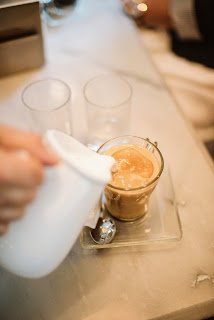CAFÉ CON LECHE / CAFÉ AU LAIT

Café con Leche Some people need their caffeine fix to start their day, but just do not like the strength and bitterness of coffee. Luckily for them, there is a wonderful option that is equally as wonderful (in a different way), but can still give you that caffeine jolt: Coffee with Milk. There are some variations on the types of “coffee with milk” which let’s be real, sound better and fancier in their respective languages Café Au Lait - origins, France Café con Leche - origins, Spain Café con Leche, Cubano - origins, Cuba In France, a café au lait is made with one ounce of espresso, combined with a cup of warm milk. This isn’t a latte because it is a drink that can be enjoyed without the foaminess of a latte. In France a café au lait is generally served in an oversized mug or bowl, so pastries can be dipped in there. A variation of a café au lait is a café con leche. Café con leche originated from Spain, but is now widely drunk around many Latin American countries. A café con



